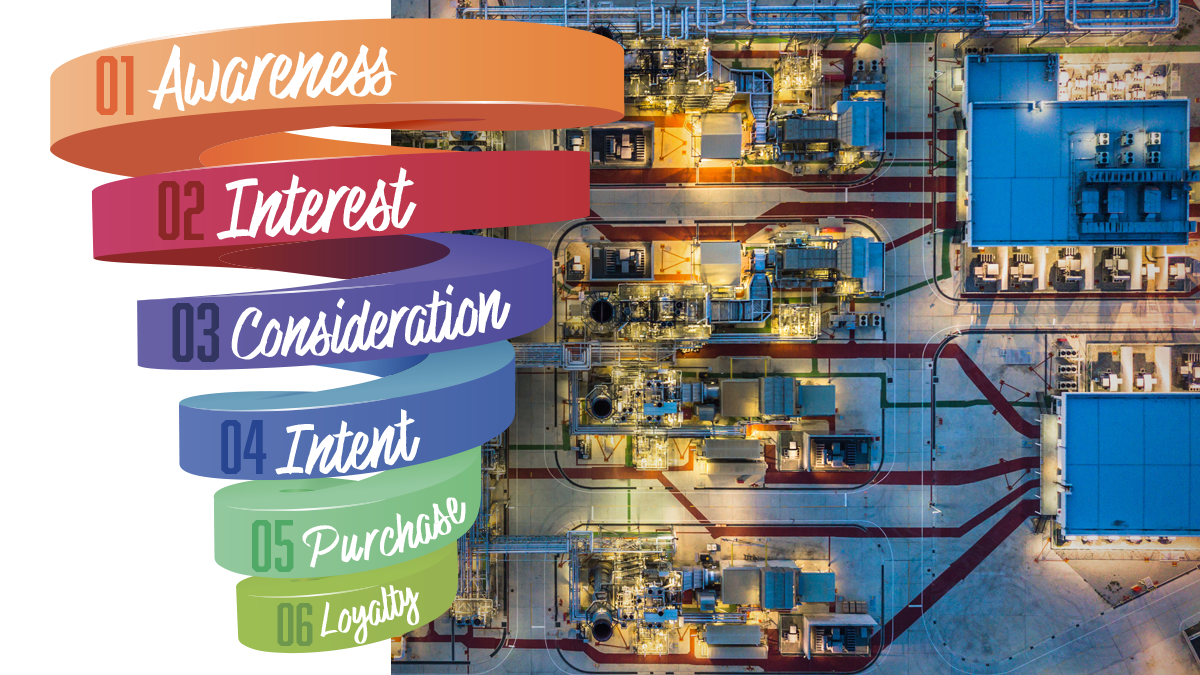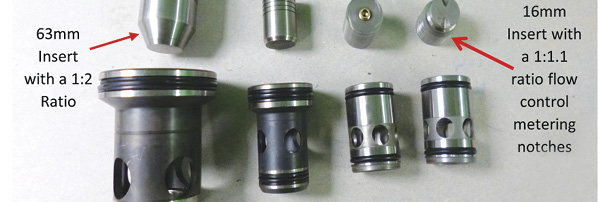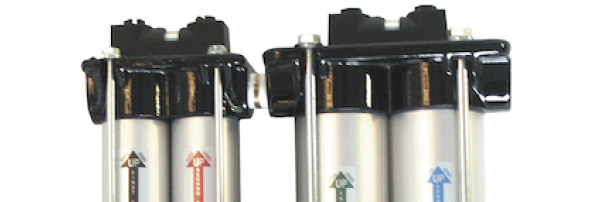The Marketing & Sales Funnel in Hydraulic Component Manufacturing & Distribution

Portions of graphic furnished by Adobe Stock | Kalyakan
A Business Development Approach
By Steve Thor, V.P. of Sales and Marketing, Aggressive Hydraulics
In the competitive arena of hydraulic component manufacturing and distribution, what if you could stop chasing customers and start attracting them naturally? Imagine a strategy that doesn’t just speak to your audience but taps into their core needs, positioning you as the trusted industry leader they didn’t know they were looking for. This article reveals a powerful, forward-thinking approach that merges the best of classic marketing principles with the reach of modern technology, thus creating a path to consistent, sustainable growth. Here, you’ll learn how to craft a marketing and sales funnel that moves beyond sales pitches, inviting prospects to see you as the expert they can trust. Ready to learn how to draw in your ideal customers, build lasting loyalty, and make an impact that keeps them coming back? Read on to unlock the secrets of a winning strategy that turns curiosity into commitment.
Understanding the Marketing and Sales Funnel for Hydraulic Component Manufacturers and Distributors
A typical marketing and sales funnel is often divided into several stages, which map the progression of a customer’s engagement with a company’s brand and product offerings. For a hydraulic component manufacturer or distributor, each stage of the funnel requires a unique business development approach. Unlike consumer goods, the B2B market in fluid power is characterized by longer sales cycles, complex decision-making processes, and the need for technical support at nearly every touchpoint. Let’s examine each stage of the marketing and sales funnel and explore how business development can drive success at each level, specifically within the hydraulic component industry.
Awareness Stage:
Building Industry Presence and Credibility
In the awareness stage, the primary goal is to ensure that potential customers become familiar with your brand and understand the broad value proposition your hydraulic components offer. The fluid power market is specialized, meaning that your marketing efforts should be highly targeted and focused on industry-specific platforms and channels. Position your brand as a thought leader in hydraulic component technology by publishing white papers, technical guides, and industry reports on topics such as component design innovation, material selection for durability, or how to increase operational efficiency using advanced hydraulic systems.
Participating in events like IFPE or industry-specific trade fairs can create brand visibility. Offering live demonstrations of hydraulic components in action or conducting educational sessions on the latest trends in hydraulic system design can boost recognition. Ensure search engine optimization (SEO) for your website specific to relevant keywords like “custom hydraulic components,” “heavy-duty hydraulic components,” or “precision hydraulic systems” to increase visibility among potential clients searching for solutions. Business development efforts in the awareness stage are focused on generating leads through outbound digital marketing and ensuring that your brand is positioned where key decision-makers are likely to discover it.
Interest Stage:
Engaging with Technical Content
Once potential customers are aware of your hydraulic components, the next step is to engage them further by providing content that builds interest. Since purchasing decisions in the fluid power sector are often technical and driven by performance metrics, it’s essential to educate potential customers about the specific advantages of your products. Offering in-depth demonstrations of how your hydraulic components work, either through live webinars, product demonstrations, or on-demand videos, is a powerful way to engage prospects. Highlight key features such as custom designs, material choices, or performance in extreme environments.
Nurture leads by sending educational content through structured email campaigns. A series of emails explaining various applications of hydraulic components across industries or highlighting successful case studies can keep prospects engaged with your brand. Provide calculators, configurators, or online tools that help prospects understand how your components can meet their specific requirements, such as an interactive calculator that allows engineers to input specifications and receive product performance feedback. Business development professionals should focus on maintaining regular contact with leads during this stage, answering technical questions, and offering additional resources to guide their interest toward a solution.
Consideration Stage:
Addressing Technical Concerns and Differentiating from Competitors
At the consideration stage, potential customers are evaluating your hydraulic components alongside those of your competitors. This is where business development efforts focus on addressing technical concerns, clearly differentiating your products, and building trust with the customer.
Demonstrate how your hydraulic components have been successfully used in similar applications, building credibility through in-depth case studies that highlight measurable improvements, such as longer lifespan, increased efficiency, or reduced downtime. Provide transparent comparison guides, data sheets, or other tools that allow prospects to see how your hydraulic components perform against competing products in terms of technical specifications, durability, and customization options, helping them make informed decisions.
Offering samples or trial periods for potential customers to test your components in their specific applications can reduce perceived risk and build confidence in your product. The business development team’s role here is to ensure that prospects have all the information they need to feel confident about choosing your solution, offering personalized advice and technical support throughout the decision-making process.
Intent Stage:
Facilitating Purchase Decisions
By the time a prospect reaches the intent stage, they are close to making a purchase decision but may still need reassurance. Business development efforts here focus on removing any remaining obstacles and ensuring a smooth path to purchase.
Customize quotes and proposals to the specific needs of the customer, including custom component designs or volume discounts. Providing detailed pricing information and clear timelines for delivery ensures transparency. Offering flexible payment terms can ease the purchasing decision, especially for customers looking to make large investments in hydraulic systems for major projects.
Emphasize the level of after-sales support, such as maintenance services, training, and warranties, which is particularly valuable in the hydraulic component market, where downtime due to equipment failure can be costly. At this stage, business development professionals should focus on finalizing the deal while ensuring the customer feels supported throughout the purchasing process.
Purchase Stage:
Delivering a Positive Experience
The purchase stage is where the deal is closed, but business development efforts shouldn’t end here. Ensuring a positive customer experience during and after the purchase is critical for securing repeat business and long-term relationships.
Provide clear communication about order status, delivery schedules, and any potential delays. Ensuring that hydraulic components are delivered on time efficiently and in line with customer expectations can set the tone for a positive relationship. Offering installation services or training on how to maintain and optimize hydraulic components for specific applications can add significant value to the customer and prevent issues down the line.
After the sale, follow up with customers to gather feedback on their experience and address any concerns. This shows that customer satisfaction is a priority and helps resolve potential issues. Business development teams should be proactive during this stage, ensuring a positive customer experience and promptly addressing any issues.
Loyalty Stage:
Building Long-Term Relationships
The final stage of the funnel is about turning one-time customers into loyal clients who make repeat purchases and advocate for your brand. In hydraulic component manufacturing, where equipment longevity and performance are critical, loyalty is built on trust, quality, and ongoing support.
Stay in touch and check in with customers by providing regular updates on new products, technical innovations, and industry trends. Offering exclusive insights or early access to new technologies can strengthen relationships. Encourage repeat business by offering discounts or incentives for repeat orders or establish a referral program where satisfied customers can recommend your components to others.
Implement customer success programs that focus on helping clients maximize the value of their hydraulic systems through maintenance services, training updates, or periodic performance checks. The business development team’s role at this stage is to nurture long-term relationships and continuously provide value to the customer beyond the initial sale.
Aligning Marketing and Sales for Effective Business Development
To optimize the marketing and sales funnel in hydraulic component manufacturing and distribution, it’s critical to align marketing efforts with business development and sales strategies. A few key methods to foster this alignment include:
Shared Metrics and Goals: Marketing and business development teams should work toward common goals, such as lead generation, conversion rates, and customer retention.
Collaborative Content Creation: Involving business development professionals in creating marketing content ensures that messaging aligns with customer needs and addresses real-world technical challenges.
Regular Feedback Loops: Maintain open communication between marketing, sales, and business development to ensure alignment and responsiveness to changes in customer needs or market conditions.
By aligning strategies across the funnel stages, hydraulic component manufacturers and distributors can build stronger relationships with customers, optimize lead conversion, and ultimately drive growth in a competitive marketplace.







